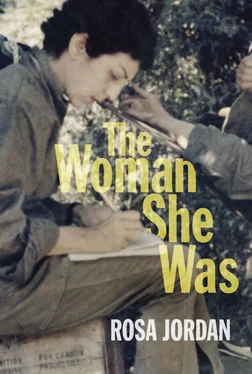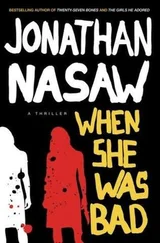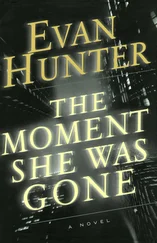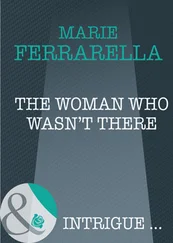Of course it mattered that the move would give her distance from Luis and Jóse. More importantly, it would put her closer to Liliana and Franci; she’d be only six hours from Santiago instead of sixteen. And of course, close to Miguel. She doubted that he would want to live with her in Playa Maguana, or that she would live with him in Parque Humboldt. But with only twenty-four kilometres separating them, she did think he would come, often, or she would go to him. They would be close enough to find out just how close they wanted to be.
He was staring at her, dubious if not incredulous. “Then you know Playa Maguana isn’t a town. Just a scattering of houses. There is absolutely no place to live.”
“Actually, there are quite a few families. And a clinic that has only a nurse, no doctor. At least, not until I get there in January.”
“Until what ?”
“They said I could live in a room at the back of the clinic. Or build a cabin of my own. The government provides some building materials free of charge. And local people help each other with the construction. I saw some of their bohíos. In the forest, like this one. But I need one on a hill where I can see the ocean.”
Suddenly Miguel was laughing. “You know, I have never been too sure about this other Celia you think you are, but I can just hear her explaining to Fidel why the Comandancia was the perfect place for them to build.”
“She did!” Celia exclaimed. “That is a historical fact! She found the place and designed the buildings and supervised the construction—Che’s hospital, the cookhouse, the cabin she and Fidel shared—everything!”
Despite Miguel’s amusement, for just an instant Celia felt a ripple of uncertainty. She was not all that practised at taking the lead and leaving others to follow or not as they pleased. Had she pushed things beyond where he wanted to go? Might he feel threatened? He had not, after all, said any of the traditional things.
Before the fear could be fully realized, he leaned against the door frame and pulled her to him. “Compañera Celia, have I told you that you are an amazing woman?”
“Not lately. In fact, not ever.”
“An amazing, hot, sweaty woman,” he said, licking beads of sweat from her neck. “Not to mention salty.”
“I would have washed up but—where do you bathe anyway?”
“In the stream.” He jerked his head toward a trail that disappeared into the forest. “It’s the one that flows down from the Comandancia, you know, that one below Celia and Fidel’s cabin. Come, I’ll show you.”
She did not need to be shown… mossy green boulders with that stream spilling down from a height of three metres, into a pool where dappled light passes through clear water to create ephemeral patterns on a sandy bottom . She saw it already in her mind, and laughing, began to run.
“Wait!” he shouted. “It’s not an easy trail. You’ll get lost.”
No. There are many ways. I will find one.
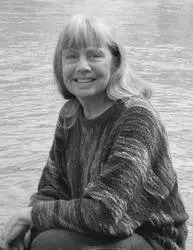
ROSA JORDAN grew up in the Florida Everglades and earned degrees from universities in California and Mexico. She immigrated to Canada in 1980 and currently resides in Rossland, BC, with her partner Derek Choukalos. They have co-authored two travel guides to Cuba, Cycling Cuba and Cuba’s Best Beaches . One section of Rosa’s autobiographical travel narrative, Dangerous Places: Travels on the Edge , is also about Cuba.
Copyright © 2012 Rosa Jordan
All rights reserved. No part of this publication may be reproduced, stored in a retrieval system, or transmitted in any form or by any means—electronic, mechanical, recording, or otherwise—without the prior written consent of the publisher or a licence from The Canadian Copyright Licensing Agency (ACCESS Copyright). For a copyright licence, visit accesscopyright.ca.
LIBRARY AND ARCHIVES CANADA CATALOGUING IN PUBLICATION
Jordan, Rosa
The woman she was [electronic resource] / Rosa Jordan.
Electronic monograph.
Originally published by Brindle & Glass in 2012 in paperback with ISBN 978-1-926972-46-6.
ISBN 978-1-926972-47-3 (HTML).—ISBN 978-1-926972-48-0 (PDF)
I. Title.
PS8619.O74W66 2012 C813’.6 C2011-907168-1
Editor: Kathy Page
Copy Editor/proofreader: Heather Sangster, Strong Finish
Design: Pete Kohut
Front cover photo: Celia Sánchez (detail) courtesy of Wisconsin Historical Society Image ID 85353 was taken by Dickey Chapelle, who spent time in the mountains with the Cuban rebels before going on to Vietnam, where she was killed.
Photo on page ii: Memorial of Celia Sánchez, taken by Rosa Jordan
Author photo taken by Derek Choukalos
Brindle & Glass is pleased to acknowledge the financial support for its publishing program from the Government of Canada through the Canada Book Fund, Canada Council for the Arts, and the Province of British Columbia through the British Columbia Arts Council and the Book Publishing Tax Credit.
Brindle & Glass Publishing Ltd.
brindleandglass.com
